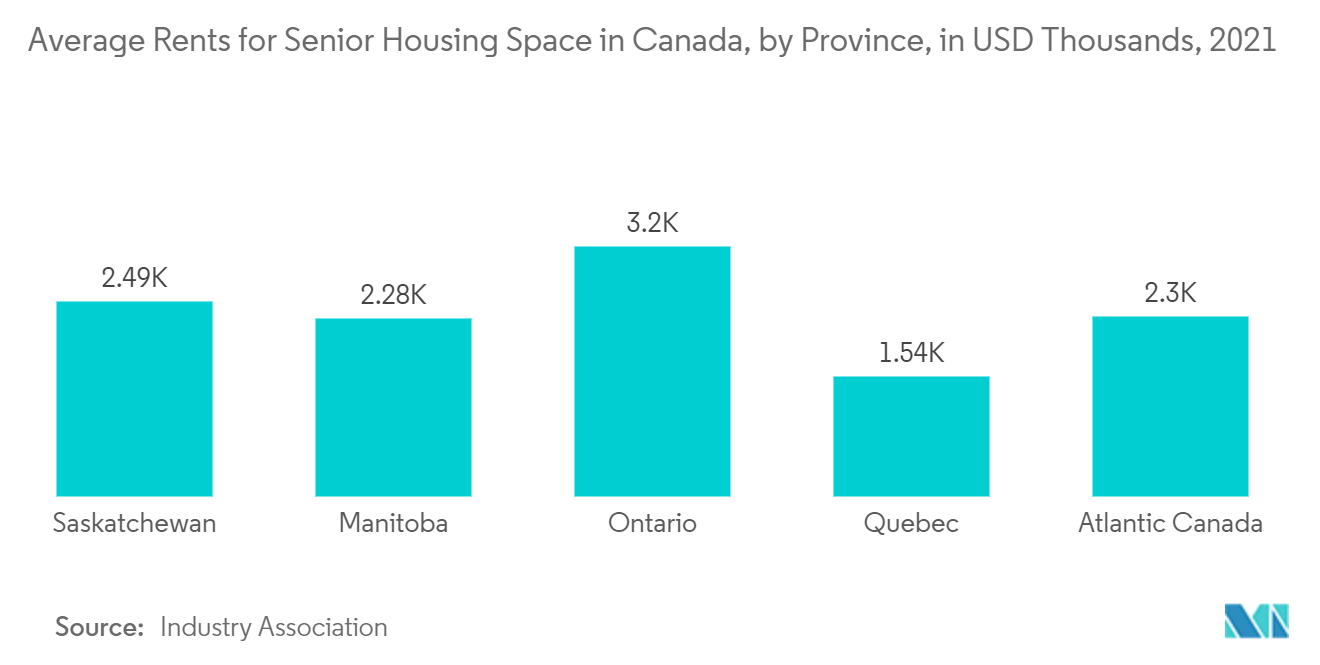Market Trends of Canada Senior Living Industry Analysis
Rise in Investments for Senior Housing
Despite the negative impacts of COVID-19, the sector is experiencing its best period ever for investment. In 2021, investments in Canadian senior housing were recorded at around USD 1.48 billion, higher than the previous year, i.e., only USD 0.81 billion. Most of the Canadian senior housing market participants are integrated owners/operators. These companies devoted the majority of their focus to operations in 2020 rather than pursuing new investments.
Following a quiet start to 2021, investment market activity picked up in the second half of the year, marked by major investments by Blackstone, Ventas, and Harrison Street. As a result, the total dollar volume of Canadian senior housing transactions in 2021 nearly doubled the volume of transactions that closed in 2020. Canadian senior housing transaction activity and overall momentum will continue to increase in 2022.

Increase in Rents for Senior Housing in Canada
The number of residents decreased or only moderately increased, leading to higher vacancy rates. The weak demand could be the reluctance of households to move into senior residences during the COVID-19 pandemic. Despite the increase in vacancy rates, rents increased in all provinces due to the rising cost of living and other essentials. Quebec posted the highest capture rate in the country despite a decrease. About 17% of seniors aged 75 and older lived in senior residences in 2021. This proportion varied between 5.0% and 10% in other provinces across the country.
Average rents in British Columbia across all unit types increased from USD 2,489.04 to USD 2620 in 2021, while average rents in Alberta rose to USD 2,518.64 in 2021. While in a few provinces, rents declined, such as in Manitoba, Prince Edward Island, Newfoundland, and Labrador.


